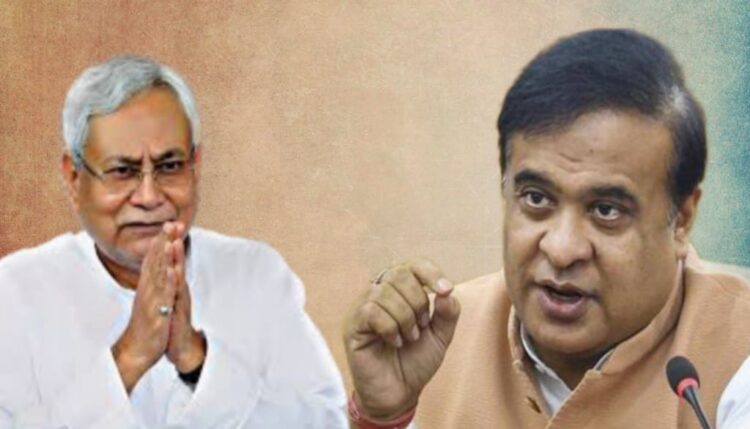Patna: Nitish Kumar was sworn in as Bihar’s Chief Minister for the tenth time on Thursday and is being praised within the NDA for implementing a welfare strategy that may have transformed the state’s political scene. Central to the coalition’s significant 202-seat win was the Chief Minister’s Women’s Employment Scheme, which involved depositing Rs. 10,000 into the bank accounts of 1.5 crore women during the election campaign. Assam Chief Minister Himanta Biswa Sarma has now claimed that the credit for this impactful initiative “partly belongs to Assam.” In an interview with a national newspaper, Sarma stated that the idea was conceived months earlier when he sent senior bureaucrats to Patna at the request of the Nitish Kumar government.
“Five months ago, my officers presented the ‘Jeevika ₹10,000 Model’ to Bihar’s then Chief Secretary Amrit Lal Meena and Development Commissioner Pratyay Amrit,” he said. “That model was later incorporated into Bihar’s Women’s Employment Scheme — and the outcomes are evident.” Sarma noted that the presentation was developed at the request of Sanjay, Executive Chairman of Vision 100, who organized briefings for Bihar’s senior officials. Sarma also mentioned that this was not the first instance of Assam’s welfare framework influencing other states. “Even Madhya Pradesh’s Ladli Behna scheme took cues from Assam’s Arunodaya model,” he added. The monthly ₹1,000 payments to women were considered vital in the BJP’s success in the closely contested 2023 MP assembly elections.
Women voters significantly influenced the outcome in Bihar’s 2025 election, with total voters amounting to 7.45 crore, including 3.51 crore women and 3.93 crore men. The female-to-male ratio was 892 per 1,000, and turnout surged, with women’s participation rising from 59.7% in 2020 to 71.6% in 2025, compared to men’s turnout of 62.8% in 2025. Analysts attribute the Rs. 10,000 transfer and Nitish Kumar’s ongoing outreach to female voters as key factors that provided an advantage over the opposition. Despite the increase in female voter turnout, representation of women remained significantly low. Bihar’s 243-member assembly would need 80 women MLAs to meet the proposed 33% reservation, a target no alliance approached.
In the NDA allocation, JDU nominated 13 women out of 101 (12.8%), BJP also nominated 13 out of 101 (12.8%), LJP (R) put forward 5 out of 28 (17.8%), and HAM (S) had 2 out of 6 (33%) — the highest percentage within the NDA. In contrast, the Grand Alliance allocation showed RJD with 24 women out of 143 (16.8%), Congress with 5 out of 61 (8.2%), and VIP with 1 out of 14 (7.1%), while left parties had negligible representation. Prashant Kishor, contesting all 243 seats independently, fielded only 25 women candidates (10.3%), falling short of his prior claim of offering 40% tickets to women.
The Bihar scheme has been publicly portrayed as part of the Prime Minister’s wider vision to create “Lakhpati Didis” — financially empowered women capable of elevating households from subsistence incomes. Sarma stated that Assam’s involvement with this vision has been consistent: “Our models have been successful in Assam, Madhya Pradesh, and now Bihar. The principle is straightforward — empower women, and political stability follows.” As Nitish Kumar embarks on his tenth term, the discussion regarding credit may persist, but the extent of women’s mobilization — and the political gains it yielded — is already being recognized as a crucial aspect of Bihar’s 2025 election.
